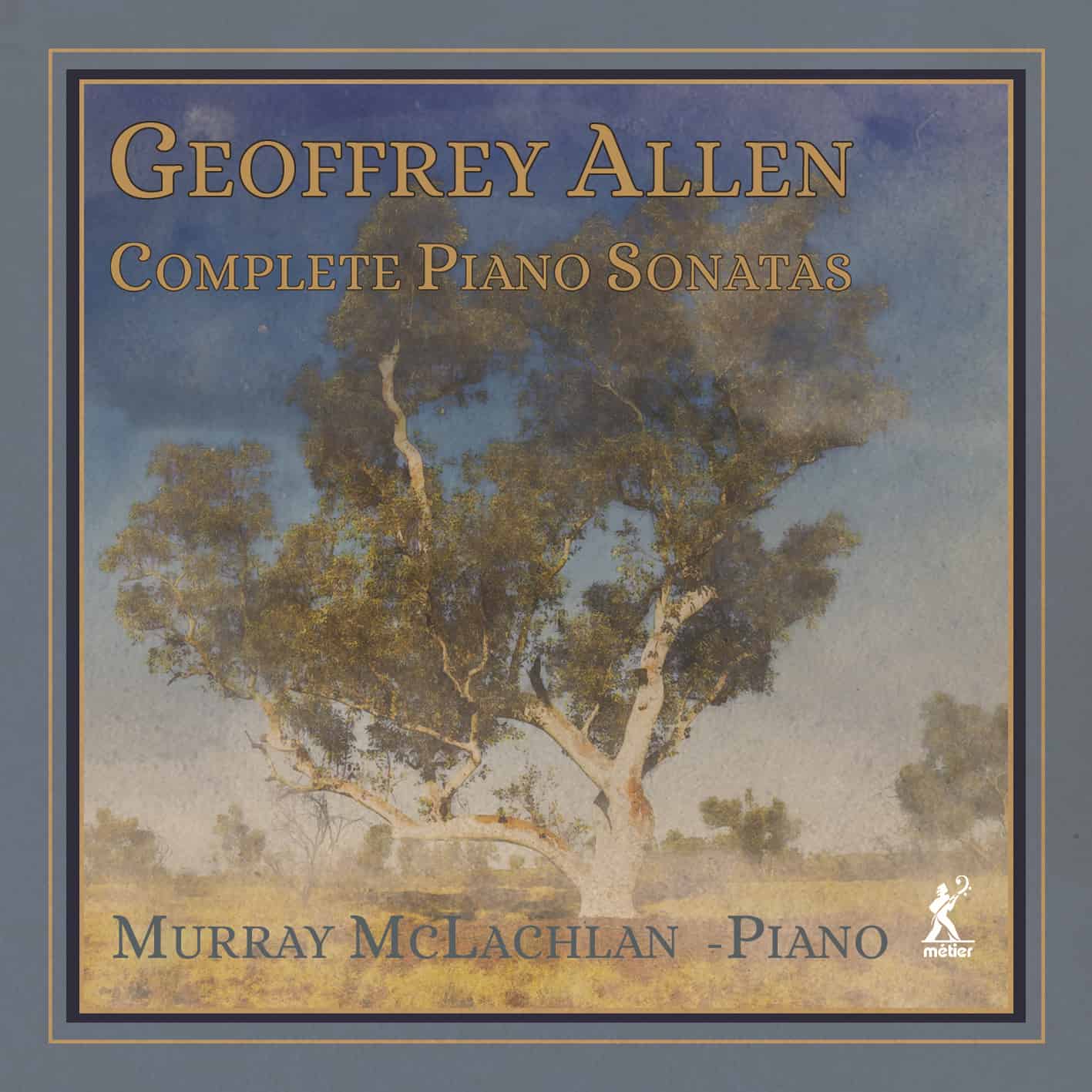International Piano
Born in Essex, Geoffrey Allen (1927-2021) emigrated to Australia in 1952, after studying chemistry and geography at Oxford, working mostly in Western Australia as a librarian. For many, his primary contribution to Australian musical life was as a publisher and recording administrator, making accessible works by many Australian and Australian-resident composers from Edgar Bainton and Margaret Sutherland to Miriam Hyde and Larry Sitsky.
Allen started composing while still in England and – private piano lessons aside – was self-taught as a composer. His piano sonatas will likely prove his most significant legacy and were largely the product of his retirement. Although Murray McLachlan suggests that he is the pianist’s Havergal Brian (see the feature on pages 34-36 of the current issue), mainly because he wrote so much of his music in his advanced years, there is no stylistic or expressive common ground between these composers. A more telling analogy might be with another self-taught Essex-born composer of piano sonatas, Harold Truscott (1914-92), although Allen’s musical and harmonic language was fundamentally different to Truscott’s, his expressive concerns differently and more narrowly focused.
What, then, does Allen’s music sound like? In his own words he felt his music was ‘mainly influenced by the English composers I grew up with – Delius, Walton, Ireland, Vaughan Williams, etc – and also by French music from Debussy on. He acknowledged many other influences, too, and his music feels international in tone, upon an English base. The music is tonally based, although fairly freely, certainly not the height of fashion in 1989 when he started work on Sonata No 2, Sonata espanola. The First, commenced but abandoned in 1959, was not resumed until 1995; No 3 was begun straight afterwards and finished in 1996. These three works set the tone for what followed, the style – which did not develop greatly (although the expressive language certainly deepened) – lyrical rather than especially dramatic, not unlike some of Truscott’s early sonatas, but less polyphonically driven.
The strengths and limitations of Allen’s style loom large in the Sonata espanola, which for much of its length will not strike many as sounding particularly Spanish. Yet its composition – following a visit to Spain in 1989 – was the vital moment in his career, providing the spur not just to this sonata, completed in 1990, but for the completion of No 1 and the 15 that followed. The French influence is heard overtly at the start of the Ninth’s opening Commodo, although it broadens out fairly quickly, while both No 7 (2000) and No 12 (2006) bear finales with a Bartókian rhythmic drive.
The Ninth (2002) is one of many that arose from purely musical considerations (or with no declared programme); the neo-Romantic Twelfth (2006) is another. Nos. 6 (1999-2000) and 10 (2003), however, were responses to political events outside Australia, whether the twin atrocities in Kosovo and East Timor or the Second Gulf War. The Tenth encapsulated his mood, ‘somewhere between anger and despair’, especially in the magnificent final Grave, one of his finest utterances.
There is no denying Murray McLachlan’s winning advocacy, each sonata persuasively presented with commendable limpidity, alive to the many nuances of Allen’s unorthodox, not unchallenging pianistic manner. Métier’s recordings are beautifully clear, providing the music with the finest possible platform, and I hope it is taken up by others. If the set lacks anything, it is a single standout work to ignite that interest, but there are no weak pieces here: consistency is one of Allen’s strong suits.
@divineartrecordingsgroup
A First Inversion Company
Registered Office:
176-178 Pontefract Road, Cudworth, Barnsley S72 8BE
+44 1226 596703
Fort Worth, TX 76110
+1.682.233.4978










![Listen to the full suite of Marcel Dupré’s Variations Sur un Noël, Op. 20 from Alexander Ffinch’s #Expectations release today! listn.fm/expectations [in bio]](https://scontent-dfw5-1.cdninstagram.com/v/t51.71878-15/588904367_2327488161082898_8709236950834211856_n.jpg?stp=dst-jpg_e35_tt6&_nc_cat=105&ccb=7-5&_nc_sid=18de74&efg=eyJlZmdfdGFnIjoiQ0xJUFMuYmVzdF9pbWFnZV91cmxnZW4uQzMifQ%3D%3D&_nc_ohc=H8WFKm530VcQ7kNvwEFJ76c&_nc_oc=Adn7Vkr-TpI1QXMc-hJBotJE8qTsDL5Jda5_Z2vlvdEN5Q3T7ssQAdXvveToPpp-Hm8&_nc_zt=23&_nc_ht=scontent-dfw5-1.cdninstagram.com&edm=ANo9K5cEAAAA&_nc_gid=LOYCyZGowH55XKioLOZBVg&oh=00_AflOG5ML8XXXEbMntxSmlZh1xqJWa3asXvTM3XNtwe8xkQ&oe=6954F8AA)

![“the ‘Manteca’ Paraphrase – a rare foray into the two-piano medium but here played double-tracked – exudes a panache of which Dizzy Gillespie would surely have approved.… [a] recital well worth investigating.” —Gramophone Magazine with high praise for Ophelia Gordon's debut release, Kapustin: Between the Lines!](https://scontent-dfw5-3.cdninstagram.com/v/t51.82787-15/598796470_18303255136283342_540941604740887837_n.jpg?stp=dst-jpg_e35_tt6&_nc_cat=108&ccb=7-5&_nc_sid=18de74&efg=eyJlZmdfdGFnIjoiRkVFRC5iZXN0X2ltYWdlX3VybGdlbi5DMyJ9&_nc_ohc=IC4zZ7tcpb8Q7kNvwH6ckh8&_nc_oc=Adly_p7OiwrsKxVpxTJdsUFz30oQl10A8ErHxjrJj-mn8OdiOENDeBsCFArBKRTdGUU&_nc_zt=23&_nc_ht=scontent-dfw5-3.cdninstagram.com&edm=ANo9K5cEAAAA&_nc_gid=LOYCyZGowH55XKioLOZBVg&oh=00_Afm2GuP84KvM5OiUjGvIjTHlVQ3uJGaYZ_LaUWvLbJ6bNg&oe=69550B44)